What does a typical workday look like to you?
Opening up your laptop for remote work? Enduring rush hour traffic to get to the office? Grabbing your toolbox for your next project?
For thousands of humanitarian workers situated in
places affected by conflict, poverty, or natural disaster, every day can look different.
Imagine …
… standing at the border of Romania, seeing and meeting
many women and children hauling bags and suitcases as they escape an unexpected war.
…walking with a family to their camp in an arid wilderness in Somalia, as they tell you about their struggle to find ways
to feed their children after their livestock perished due to a drought.
…sitting with
Syrian refugee children in a drop-in centre in Lebanon, as they draw you pictures and tell you about the impact Lebanon’s economic crisis has had on their families—ways of surviving the cold.
For many World Vision staff, moments like these are all in a day’s work, meeting the communities impacted by events many of us only hear about on the news.
This World Humanitarian Day 2022, we reached out to World Vision communicators Josephine El-Haddad, Lucy Murunga, and Andreea Bujor to hear more about the view from their “desks”—and what brought them there in the first place.
How did you get into humanitarian work?
Josephine El-Haddad, communications manager, World Vision Syria Response: Between 2013 and 2016, I worked as a news reporter when the local media was mostly interested in how the government was managing the influx of refugees to Lebanon. However, what interested me was the human side of this refugee crisis, the story behind the families who crossed the border for refuge. With World Vision, I met hundreds of families who lacked so much of their basic rights and needed someone or an entity to advocate for them.
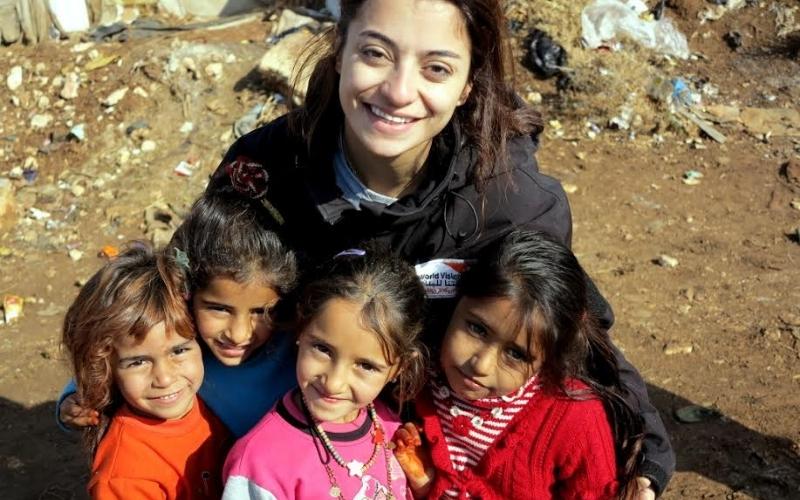 Josephine has worked with World Vision Syria Response for over six years, documenting the plight of Syrian refugees to Lebanon. Photo courtesy of Josephine El-Haddad
Lucy Murunga, communications manager, World Vision Somalia:
Josephine has worked with World Vision Syria Response for over six years, documenting the plight of Syrian refugees to Lebanon. Photo courtesy of Josephine El-Haddad
Lucy Murunga, communications manager, World Vision Somalia: After my undergrad, I got a one-year internship with World Vision in Kenya, I was based in the capital, Nairobi. In 2008, for the first assignment, my boss put me on a small humanitarian plane to the northern part of Kenya—a place called Turkana—where World Vision was providing relief assistance to drought-affected communities. I recall seeing children, men and women in very bad shape, scrambling to receive food under very difficult conditions. It was heartbreaking to witness.
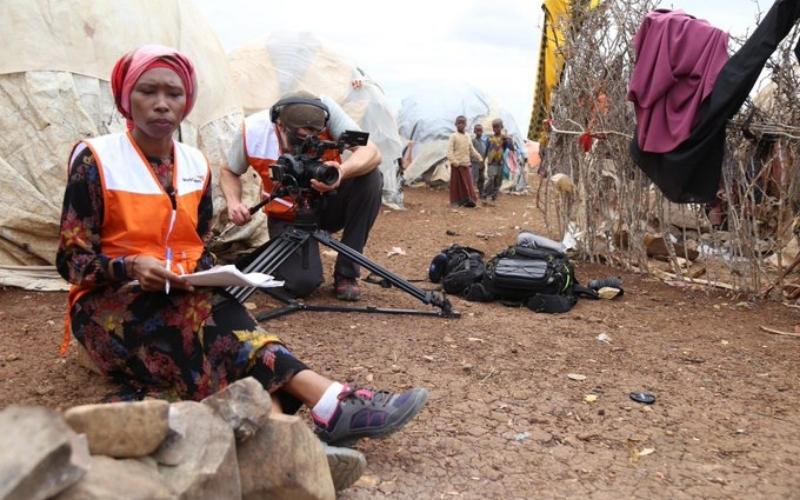 Lucy Murunga documents the stories on the frontlines of the hunger crisis sweeping east Africa. Photo courtesy of Lucy Murunga
Lucy Murunga documents the stories on the frontlines of the hunger crisis sweeping east Africa. Photo courtesy of Lucy Murunga
History repeated itself in 2011, when I traversed Kenya, telling stories of people who had been devastated by the drought. The story of one particular child, who succumbed to malnutrition, touched my heart. I recall writing his story while getting extremely emotional. My greatest motivation as a humanitarian communicator, who gets to visit disaster-affected people is getting to be their voice and being able to shine a light on the issues I witness first
-hand and amplify these issues on behalf of the people.
Andreea Bujor, communications and advocacy director, World Vision Romania: Since I was little, I knew that I wanted to become either a journalist or a judge. Injustice always struck a chord and caused me a terrible discomfort. And unfortunately, injustice is everywhere: in class, at school or in my community. I wanted to take a stand.
I started working as a journalist, covering a lot in the social area, but I was also very attracted to the field of communications and public affairs. After some years working as a journalist, I made the transition.
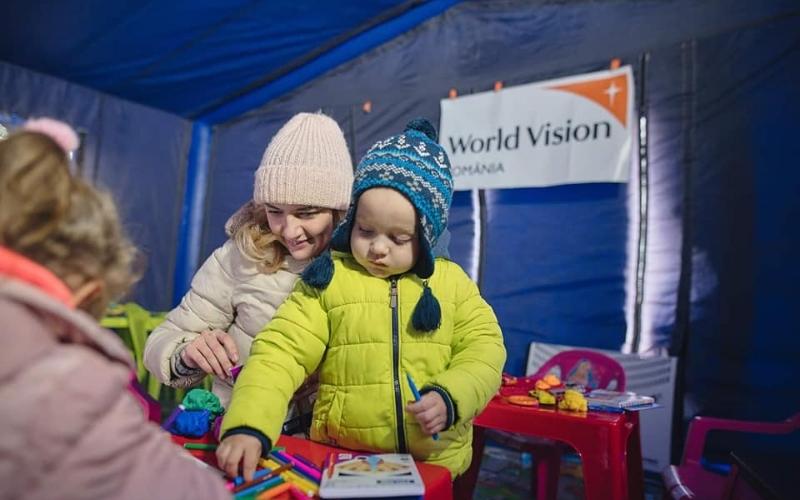 Andreea spoke with families crossing the Ukraine-Romania border in Siret, Romania. Photo courtesy of Andreea Bujor
Andreea spoke with families crossing the Ukraine-Romania border in Siret, Romania. Photo courtesy of Andreea Bujor
However, after almost four years working in the corporate area, I felt that something was missing. I really wanted to work more on social issues; I wanted to make people's stories known; and I missed journalism. And I found this field that fit me and my goals perfectly: an NGO whose vision is a world where all children aren’t food-deprived, are well-taken care of, and are well-educated.
What’s a story from your work that deeply affected you?
JEH: In June and July, we worked with over 100 hundred Lebanese and Syrian refugee children to communicate the impact of the economic crisis in Lebanon on their lives. Some chose to write blogs or take selfie videos, and the younger children were asked to draw.
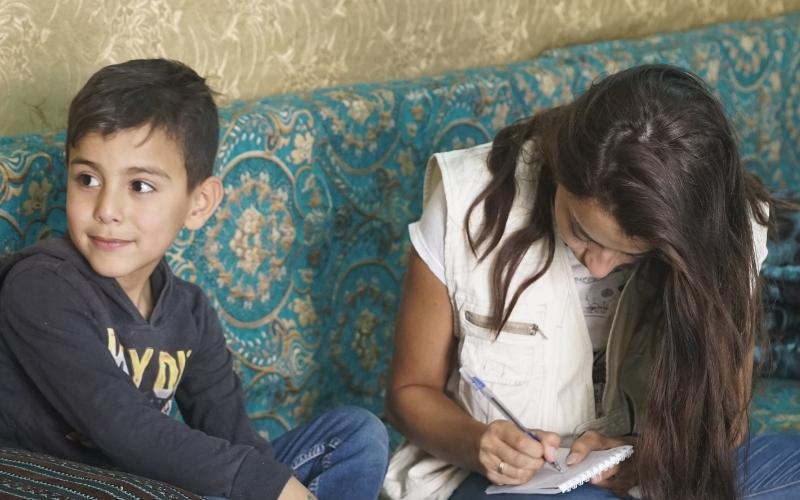 Refugee children were asked to share their experiences living in economically hard times in Lebanon. Photo courtesy of Josephine El-Haddad
Refugee children were asked to share their experiences living in economically hard times in Lebanon. Photo courtesy of Josephine El-Haddad
Eleven-year-old Maram drew a little girl in blue. The little girl in the drawing was herself, and blue was the color of her skin this past winter as her parents were unable to afford heating as a result of the increase in the prices of fuel.
Similarly, 10-year-old Radwan drew himself cutting a tree, an activity that was so common this past winter because he needed to collect wood to keep the family warm. Children shared their fears of not being able to enroll in public schools this academic year, as their parents cannot afford bus transportation or stationery fees. Other children admitted that they do not remember the last time they ate meat, chicken, or fish.
This activity motivates me to continue committing myself to amplifying the voices of children whose education, health, and entire well-being are at stake because of the economic downturn.
LM: In July, I had the opportunity of travelling across the southern part of Somalia in Baidoa and Doolow. One notable thing I witnessed in every location is most mothers I met and spoke with had at least one child who was malnourished. At the makeshift shelters for the displaced, the sheer number of people living
there was alarming.
One particular story that has stuck with me is that of a 15-year-old girl named Suldana who now lives with her family in a makeshift shelter for the displaced in Doolow, the southern part of Somalia.
Because of the prolonged drought, Suldana and her family had to abandon their village. By then, they had lost all their livestock to the drought. It took them eight days of walking to get to the camp. When I asked what she would wish for the most she said all she wanted was just to go back to their home as she did not like living in the makeshift shelters.
It was gut-wrenching to hear.
She is forced to work every day to bring food back to the family. She receives a paltry 70 cents USD for a day of doing housework. Most days they are forced to go to bed hungry or make do with only a meal a day. Suldana said she’d never gone to school
, noting that if she had the opportunity to do so, she would love to.
The sadness and devastation in Suldana’s eyes and voice as she narrated her story is haunting. The image of Suldana including her blind father who sat in the background with face down seemingly in agony, is fresh in my mind and a stark reminder of why I do what I do.
AB: Maria is a 10-year-old girl from a village in Romania. I met her three years ago, when she had just started school. We were filming a short video with her and her grandmother. Or at least I thought initially, that the woman who was taking care of her was her grandmother. I met this smart, cheerful, loving and very beautiful girl, with long black hair, a warm smile and a look that could melt your heart. Grandma was a gentle and loving woman, like the grandmothers you hear about in stories.
But when she started to tell Maria's story, all of us standing there started to cry. The girl was abandoned by her mother shortly after birth, the mother went to another country. She stayed with her father, who neglected her, did not give her food and left her alone for days, crying incessantly. I was looking at that good and cheerful little girl and I couldn't believe the trauma she went through. The grandmother, in fact, was a neighbor who saved her life. She was a woman without financial possibilities, but who loved this girl so much that she gave her a chance for a beautiful life, for education.
Maria, of course, is included in World Vision Romania’s programs.
As the saying goes, it takes a whole village to raise a child, indeed. And I also think about that, remembering Maria’s story.
Why is humanitarian work so important for you?
JEH: In the absence of resources and the right policies, through humanitarian work alone, vulnerable communities receive the most basic services and rights like access to water, shelter and nutritious food. Humanitarian work in contexts like Lebanon is life-saving and knowing that we are part of ensuring that a child is healthy and a family is able to survive hardships, is what makes humanitarian work so important and invaluable.
LM: It gives me a front-row opportunity to give comfort, share hope and our humanity with those impacted by different kinds of disasters and just being there for them in the hour of need. Besides this, as a humanitarian communicator, I have been entrusted with the honour of reporting on stories of disaster-affected populations. I get to hear firsthand people’s stories and most times people share their most intimate of stories with me. It is therefore very important to me that I do justice to their stories, tell them with the utmost dignity and respect, the way I would want mine to be told if roles were switched. But more importantly, telling those stories enables me to draw attention to a particular disaster which is very critical to mobilize funds and support.
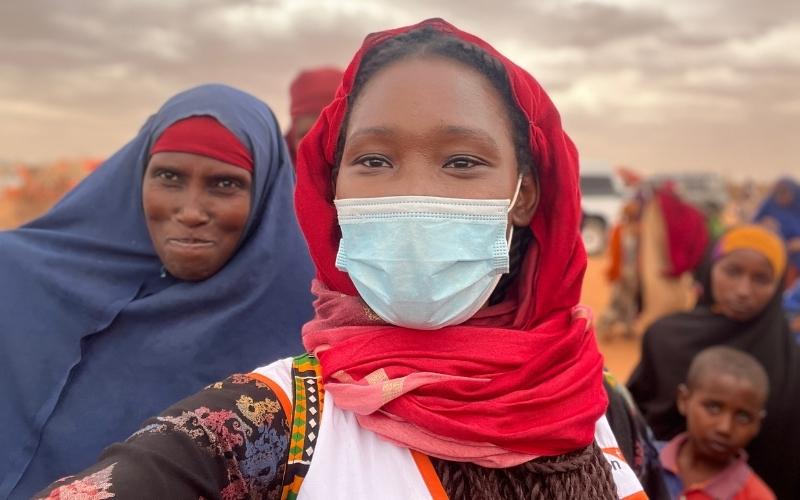 Having been with World Vision for over 13 years, Lucy has seen the hunger crisis up close, speaking with many families in Somalia and Kenya about how drought has affected them. Photo courtesy of Lucy Murunga
AB:
Having been with World Vision for over 13 years, Lucy has seen the hunger crisis up close, speaking with many families in Somalia and Kenya about how drought has affected them. Photo courtesy of Lucy Murunga
AB: Through my work, I have the opportunity to promote the stories of these children, to help make their voices loudly heard, to shape the media and political agenda to help their cause, so that we can convey their opinions and proposals to those who make the decisions. I truly feel that it is the most beautiful job in the world. It's a privilege and an opportunity.
I believe that the humanitarian sector is very important—it must complement the work of the state. The most vulnerable among us need a strong voice to represent them and fight for their interests. Only by realizing that by helping them, we are helping ourselves, as a society, only then can we say that we have made the world a little better.
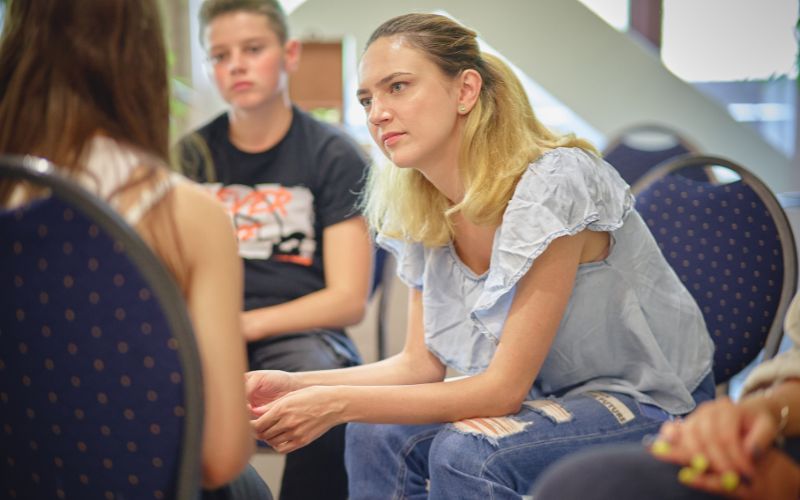 Before collecting stories of Romanian chilldren and families' resilience, Andreea used to work as a journalist covering social issues. She's now worked with World Vision for four years. Photo courtesy of Andreea Bujor
Before collecting stories of Romanian chilldren and families' resilience, Andreea used to work as a journalist covering social issues. She's now worked with World Vision for four years. Photo courtesy of Andreea Bujor
I am an advocate for the work of NGOs, for the work that my colleagues do on the ground every day. Many times, the program hours don't exist, because you can't leave when you are most needed. They are dedicated people, who spend their lives in the service of correcting injustices and they need a good thought from anyone who can offer it.
Support World Vision's work in dangerous regions today by giving to Raw Hope